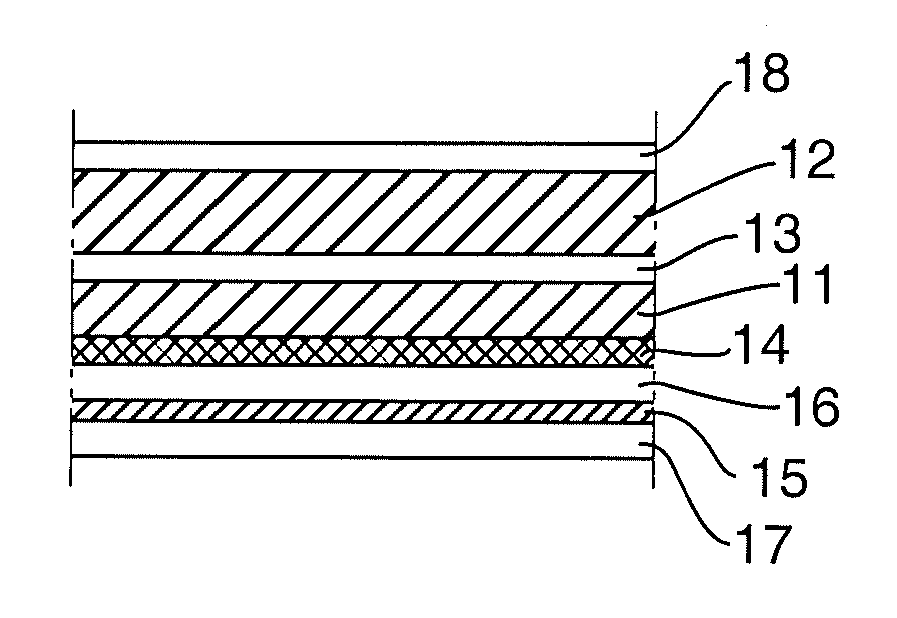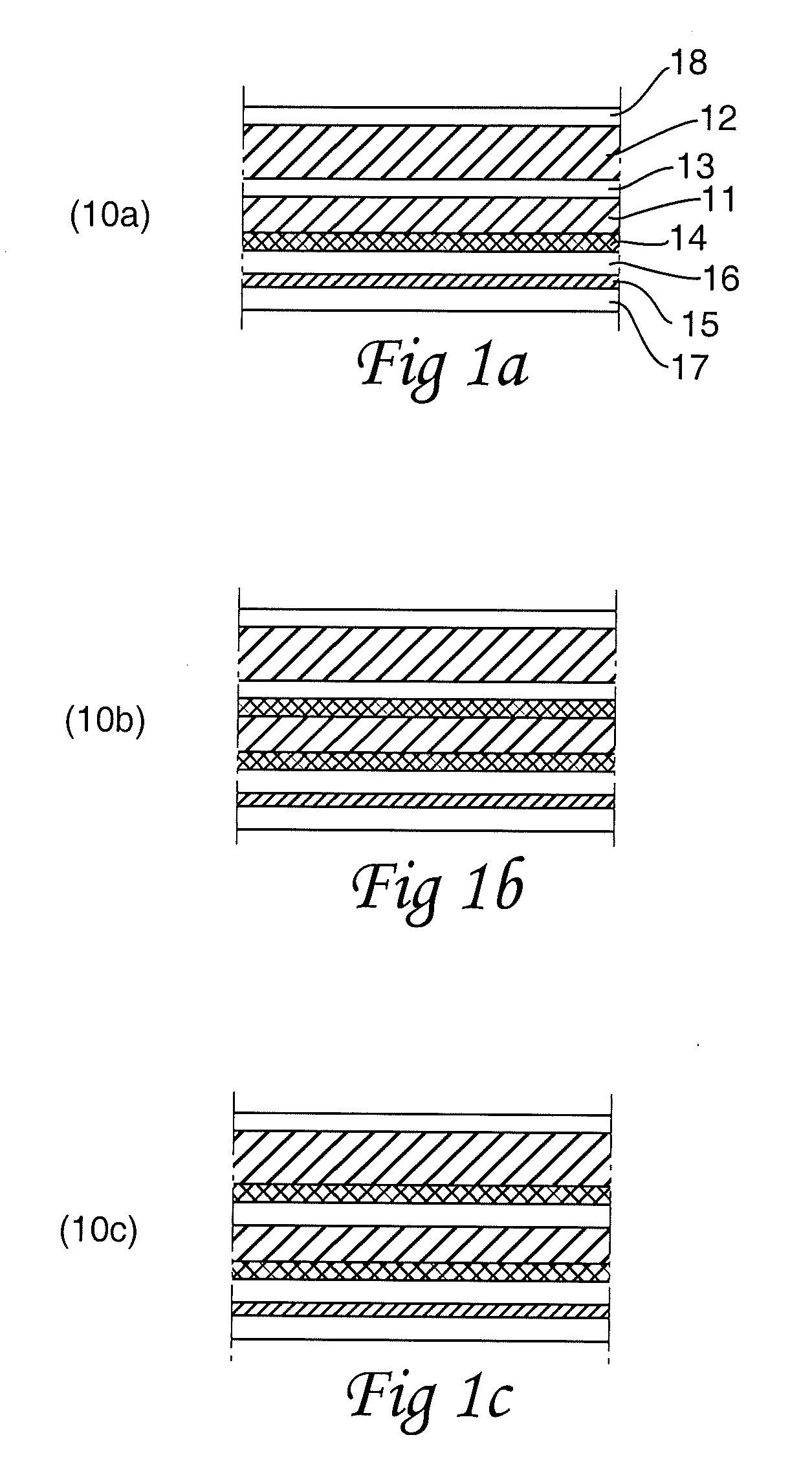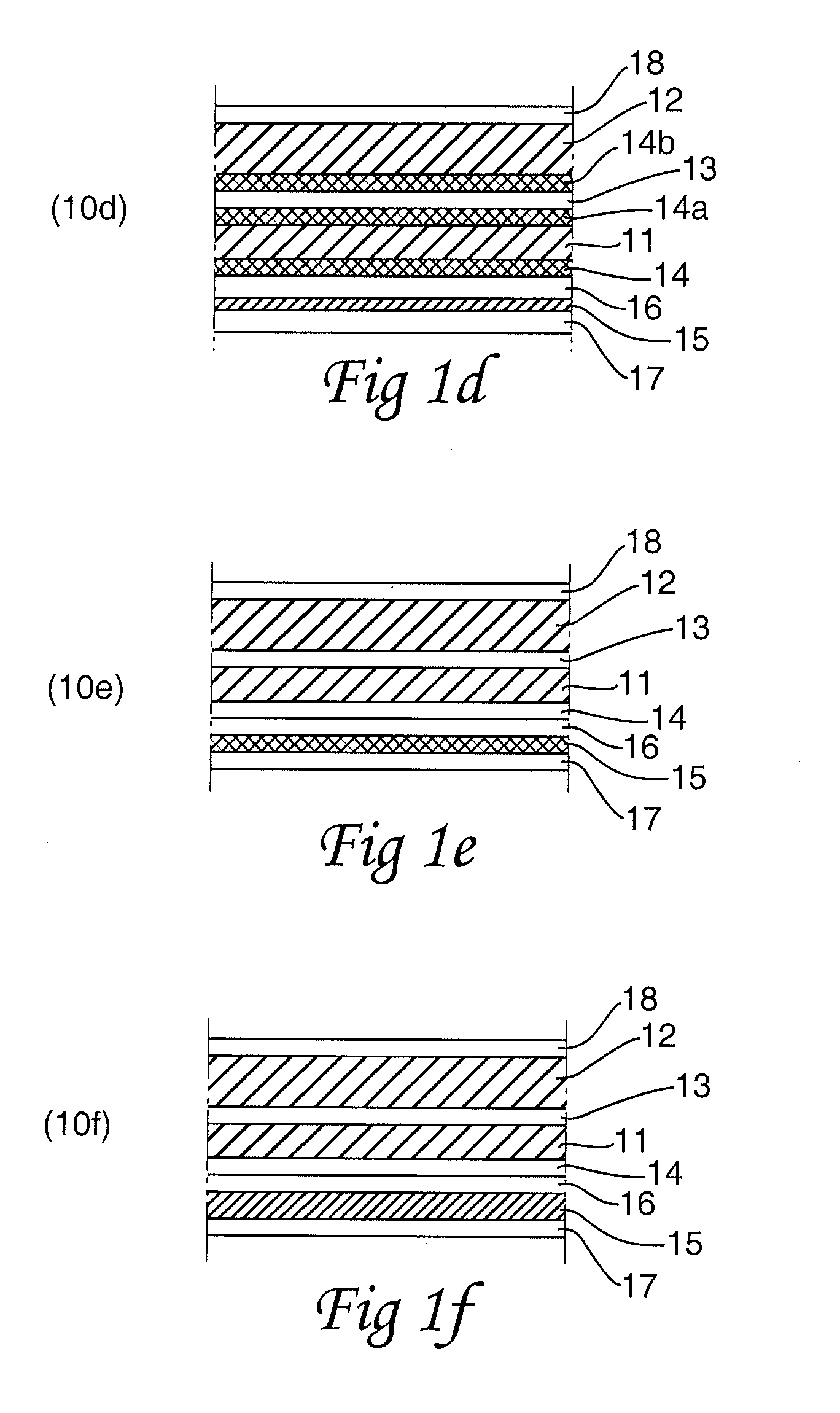High barrier packaging laminate, method for manufacturing of the packaging laminate and packaging container
- Summary
- Abstract
- Description
- Claims
- Application Information
AI Technical Summary
Benefits of technology
Problems solved by technology
Method used
Image
Examples
example 1
[0139]A packaging laminate was produced by liquid film coating of 2×1 g / m2 of an aqueous gas barrier composition of dissolved and dispersed PVOH and 30 weight-% bentonite clay, calculated on dry matter, in two consecutive steps with drying in between, onto a thin paper having a surface weight of about 50 g / m2.
[0140]Preparation of the Aqueous Gas Barrier Composition: an Aqueous dispersion of from about 1-5 weight-% of exfoliated laminar montmorillonite particles (Kunipia F from Kunimine Kogyo Co.) having an aspect ratio of about 50-5000, is blended with an aqueous solution of about 10 weight-% of PVOH (Mowiol 15-99, having a saponification degree of above 99%) at 60-90° C. during 1-8 hours. The dispersion of exfoliated laminar mineral particles may be stabilised by means of a stabiliser additive. Alternatively, the laminar mineral particles are exfoliated directly in the PVOH-solution at 60-90° C. during 1-8 hours.
[0141]Half of the first paper layer material with the liquid film coat...
example 2
[0145]In an experiment where a similar liquid gas barrier composition was coated onto different paperboard grades, it was furthermore seen that greatly varied results in oxygen transmission were obtained. It has not been fully understood why the different paperboards gave rise to the different results in oxygen barrier. The different paperboards were coated as above by 2×1 g / m2 of PVOH with montmorillonite and then further laminated with a PE inside or with a metallised PE-film, respectively, as described above. The oxygen transmission on flat packaging laminate was measured at 23° C. and 50% RH. The following paperboards were coated (numbered from 1 to 8):
[0146]1. Fröv 260 mN
[0147]2. Frövi 320 mN
[0148]3. Korsnäs 260 mN
[0149]4. Korsnäs 150 mN
[0150]5. Korsnäs 80 mN
[0151]6. Stora Enso 260 mN
[0152]7. International Paper 260 mN
[0153]8. Klabin 260 mN
[0154]As can be seen in the diagram of FIG. 7, the differences in oxygen transmission values (cc / m2, day, atm 100% oxygen, 23° C., 50% RH) a...
example 3
[0163]With this example the synergistic water vapour barrier effect from the combination of a gas barrier layer comprising inorganic particles, when coated onto a single paperboard in a laminate, with an inside polyolefin-based water vapour barrier layer with inorganic filler particles as separate layers in a packaging lamiante, is shown.
[0164]According to the present invention, the gas barrier composition is coated onto the first paper layer. The laminated pre-made inside with the water vapour barrier and inside layers is laminated to a second paperboard layer in a final step. The barrier effects of the laminate of the invention will be at least as good as, or likely even better, according to the following example.
[0165]A packaging laminate was produced by liquid film coating of 2×1 g / m2 of an aqueous gas barrier composition of dissolved and dispersed PVOH and 30 weight-% bentonite clay, calculated on dry matter, in two consecutive steps with drying in between, onto a 320 mN CLC / C ...
PUM
| Property | Measurement | Unit |
|---|---|---|
| Weight | aaaaa | aaaaa |
| Thickness | aaaaa | aaaaa |
| Dimensional stability | aaaaa | aaaaa |
Abstract
Description
Claims
Application Information
 Login to View More
Login to View More - R&D
- Intellectual Property
- Life Sciences
- Materials
- Tech Scout
- Unparalleled Data Quality
- Higher Quality Content
- 60% Fewer Hallucinations
Browse by: Latest US Patents, China's latest patents, Technical Efficacy Thesaurus, Application Domain, Technology Topic, Popular Technical Reports.
© 2025 PatSnap. All rights reserved.Legal|Privacy policy|Modern Slavery Act Transparency Statement|Sitemap|About US| Contact US: help@patsnap.com



